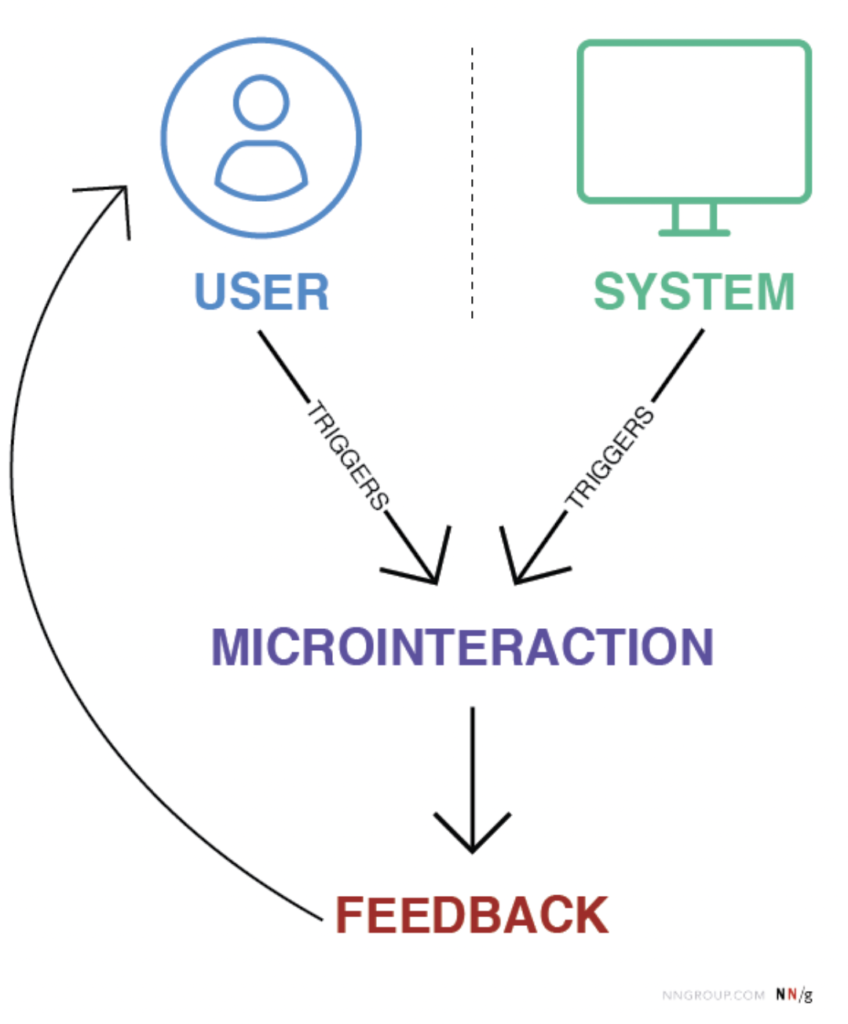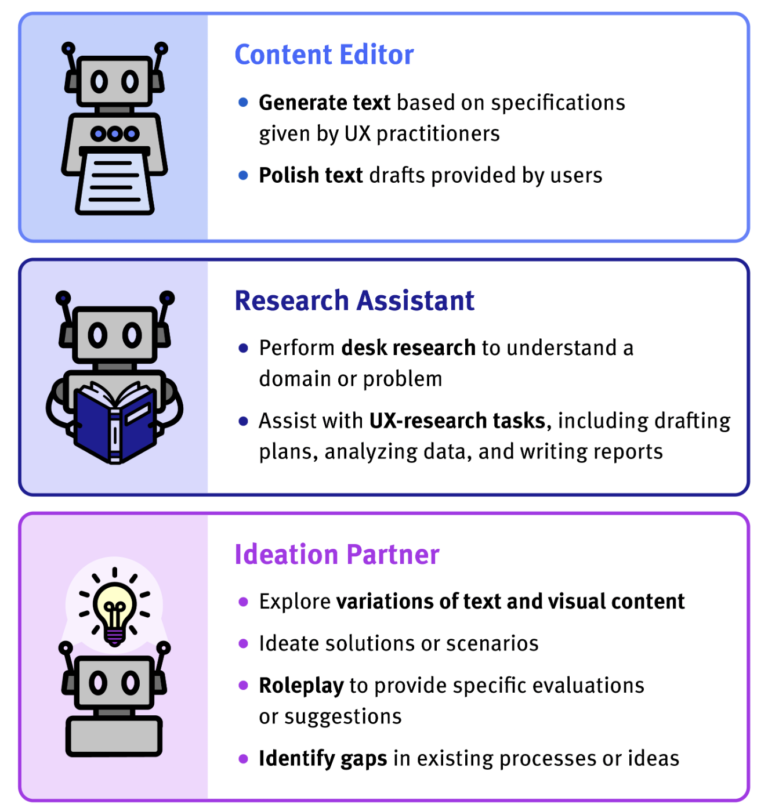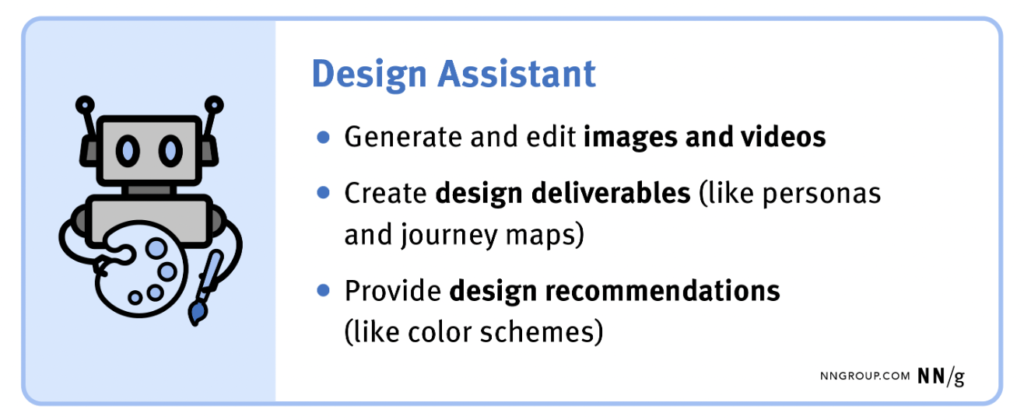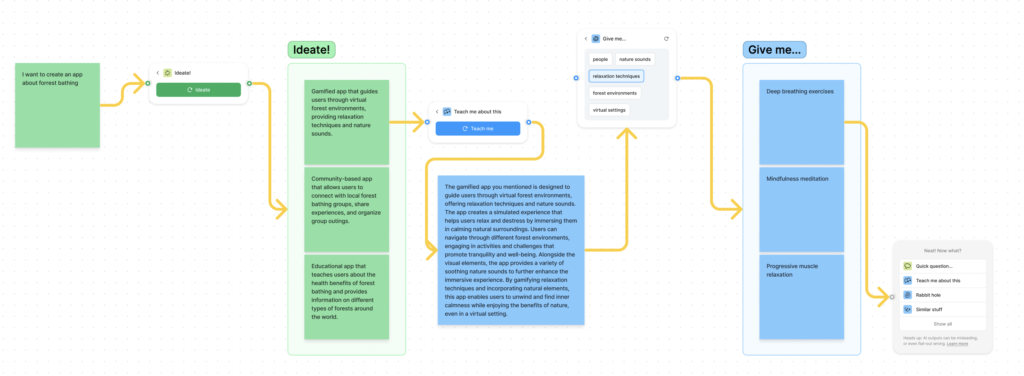After this lecture, I decided to do some reaserch into some of the main trends in the UX/UI industry in 2023/2024:
- Advanced cursor interactions
- Personalized experiences
- Data visualization
- Dark mode
- Micro-interactions
- 3D designs
- Generative AI in design processes
After looking into some of the main trends I decided to do some further research into Micro-interactions and generative AI in design processes.
Micro-interactions
Micro-interactions are subtle interactions that users have with a product, app, or website. These interactions are typically focused on a specific task or feature and are designed to provide feedback, guidance, or acknowledgement to the user. They are important for enhancing user experience and can impact how users engage with a digital product.
The Neilson Norman Group have written an interesting article on micro-interactions and provides a simplistic and clear diagram of how they work which can be accessed here
A process flow indicating how micro-interactions are either user- or system-triggered, and result in feedback communicated to the user by a small change in the user interface. (Nielsen Norman Group, 2018)
Additionally, in the article, Neilson provides a list of examples of what micro-interactions can be in an interface:
- Scroll Bar
- Digital Alarm
- Button ( depending on if there is feedback when the button is pressed)
- Pull to refresh animation
- Swipe animation
- Email Notification

Neilson explains how important micro-interactions are in interfaces as they increase user engagement which can improve a product user experience by:
- Encouraging engagement
- Displaying system status
- Providing error prevention
- Communicating brand
These show how even though micro-interactions are not a main aspect of a website they have a large influence on user experience.
Generative AI in design processes
The Neilson Norman Group created a “large scale” survey in 2023 questioning how UX professionals use generative AI in their designs. They concluded that 92% of the 800 respondents had used at least one generative AI software. This figure hilights how AI software is commonly used within the industry.However there is concern about how much we should incorporate the software into the designs but Neilson provides examples of how if used correctly, AI can assist UX professionals.


Nielsen Norman Group. (2018). Microinteractions in User Experience. [online] Available at: https://www.nngroup.com/articles/microinteractions/ [Accessed 13 Dec. 2023].
From reading more about the article, as an aspiring ux deisigner I can see that using AI can be useful in creating effective user journeys and useful in completing ux research tasks. However, the software should be use as an assistant and shouldn’t be used as the final outcome.
In my research I read that Figma ( a leading software in the ux/ui industry) released a plugin called Jambot. The company describes the software as “Jambot, you can create visual mindmaps with AI, take a multi-threaded approach to brainstorming, and generate ideas with teammates and ChatGPT in the same canvas.” (Figma, 2023)
I decided to experiment with the software in my own project:

I gave the software the brief of creating an app that promotes forrest bathing as this was one of my ideas for my RSA project. Jambot provides a variety of options that it can produce, chose the ideate option and it provided me with a variety of ideas. I then asked the software to summarise what forrest bathing was and the answer aligned with my own previous research.Lastly, I wanted to see how far I could go with this idea and asked it to generate me some relaxation techniques which I could use in the app. Even though the answers were simple, the techniques were correct .
From this excersise I improved my research skillset and trying out new software in line with new trends. I became more familiar with the software and found that using the software in my project allowed me to understand the software more and allowed me to make my own opinion as a designer which resulted in a more critical view of this particular trend.